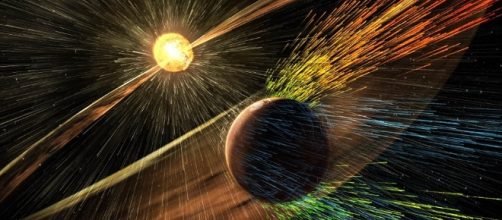The Sun is an incredibly large object (109 times the diameter of Earth), yet pales in size when compared to other stars. Regardless, the Sun has been instrumental in shaping our Solar System by exerting its gravitational force and influencing space and planetary weather. It also played a key role in the development and sustainability of life on Earth. However, the star is not entirely peaceful, as it can also unleash powerful solar flares and winds that can severely affect our technology and modern way of life.
As stated in a recent study by the National Academy of Science, a large-scale solar event has the potential to cause trillions of dollars in damage with massive repercussions for the United States (e.g.
The Eastern Seaboard going dark for a whole year). Here lies the importance of preparing ourselves for solar events by understanding our Sun and improving our ability to forecast space weather. To this end, NASA is investing in an ambitious mission to study our Sun: Solar Probe Plus.
A mission to reach a star
Solar Probe Plus, a large cylindrical spacecraft will fly within Mercury's orbit -- 4 million miles from the Sun's surface. Although protected by a 4.5-inch carbon-composite shield, the Probe will face an extreme amount of heat and radiation from the Sun, more than any other spacecraft. This is not surprising considering the Sun's Corona outputs heat upwards of a million degrees Kelvin. The Probe's payload of instruments includes a wide image telescope to capture images of solar wind, particle detectors, and devices to measure electronic and magnetic fields.
Solar Probe Plus has a launch date of July 2018 and will orbit the Sun from November 2018 until June 14, 2025.
NASA will announce more information about the mission's progress on May 31 of this year, with more dates soon to follow.
Importance of Solar Probe Plus
Solar Probe Plus will help understand the threats of space weather and how to forecast it, while bringing many other important questions and answers about our Sun and its surrounding region, the Corona. Additionally, it will be able to record how solar winds go from subsonic to supersonic speeds, and explore areas where high-energy solar particles are born. These particles produce the Aurora Borealis and spread throughout the Solar System, traveling distances of Washington to L.A. in seconds. With this in mind, we can also safely say that interest in future space exploration remains high, as the agency has their sights on Europa and other Moons that orbit Jupiter as well.


